The sale of Tauranga’s marine precinct for at least $4 million below its valuation is a “disaster waiting to happen”, a local business owner believes.
Tauranga City Council sold the precinct at Sulphur Point for $13.987m to Christchurch developer Sam Rofe.
The 2.98-hectare precinct, also known as Vessel Works, was valued between $18.63m and $19.24m and is zoned for port industry. Some sites within the precinct are already privately owned.
Rofe approached the council in late 2023 with a proposal to buy the precinct with a vision of it becoming a “premier superyacht refit destination”.
The sale conditions meant most of the working boat operators would need to relocate from their precinct berths.
As part of the sale, the council also agreed to fund up to $29.2m to develop an alongside wharf and replace the existing Bridge Wharf.
The decision – made under the Government-appointed commission – has been criticised by precinct users and newly elected councillors.
At an extraordinary council meeting on Wednesday, marine precinct users aired their frustrations over the “unconscionable” sale and being forced to leave the precinct.
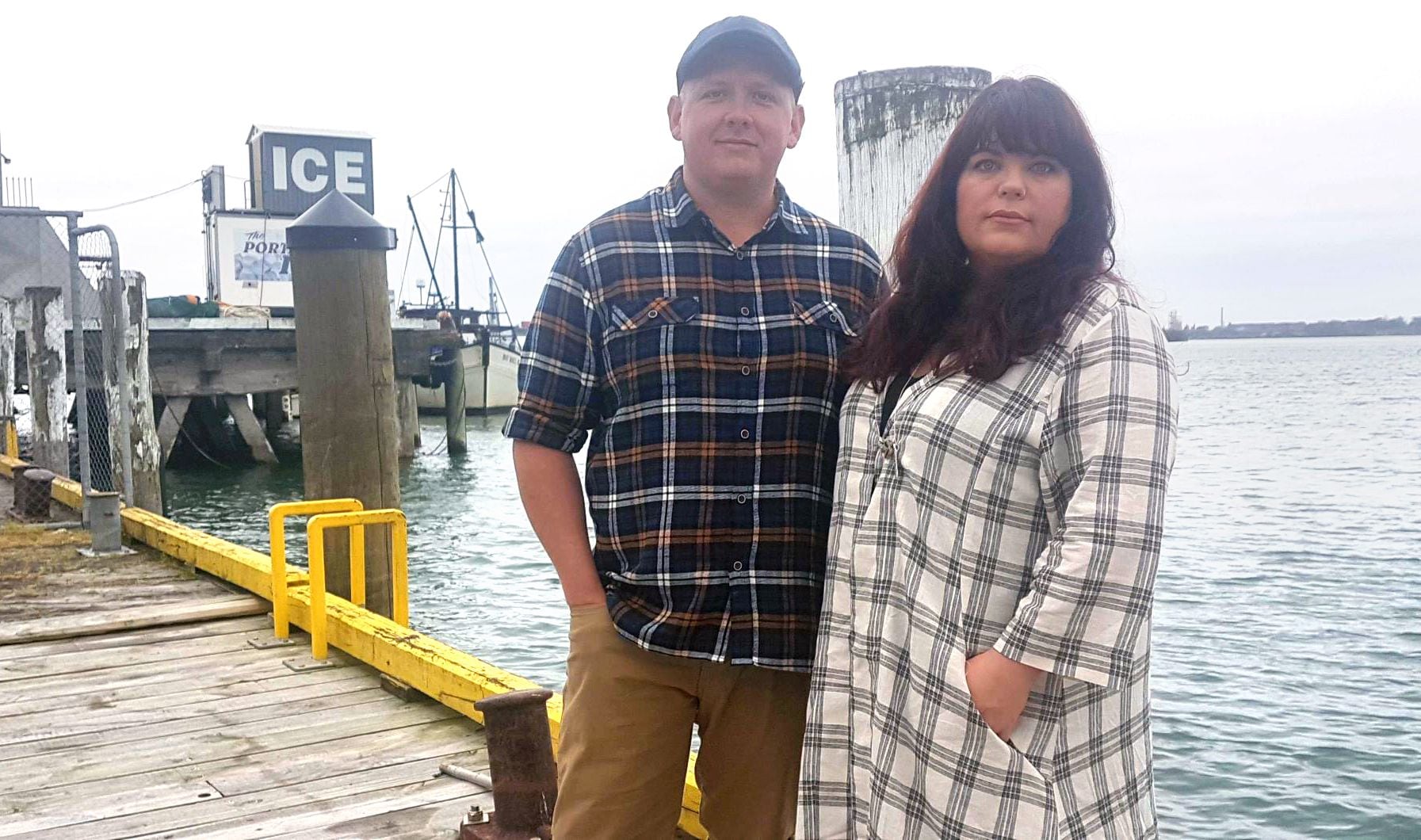
Fishing company owners Dan and Erika Harvey. Photo / Sandra Conchie.
Erika Harvey, who owns a fishing business with her family, told the meeting in her opinion the sale wasn’t just “a bad deal”, it was a “disaster waiting to happen”.
“The public is paying while the private owner profits.
In her view: “You’ve justified this by promising superyachts will bring in wealth, based on pretty pictures and a vision … but the math doesn’t add up.”
The council’s projections showed each super yacht visit would contribute between $70,000 to $100,000 to the local economy, Harvey said.
“The existing marine industry, which you’re pushing out, workboats, logistic vessels and fishing boats, contributes well over $100m annually right now.
“You’re ready to sacrifice that for a speculative luxury industry.
“The marine precinct was meant to support local fishing and marine industries.”
Harvey called for an independent investigation into the sale of the precinct.
When the council purchased the land from the Port of Tauranga in 2004, covenants were put in place to ensure the site was used for marine-related activities. These were defined as operations or activities that provided goods and services to the marine industry.
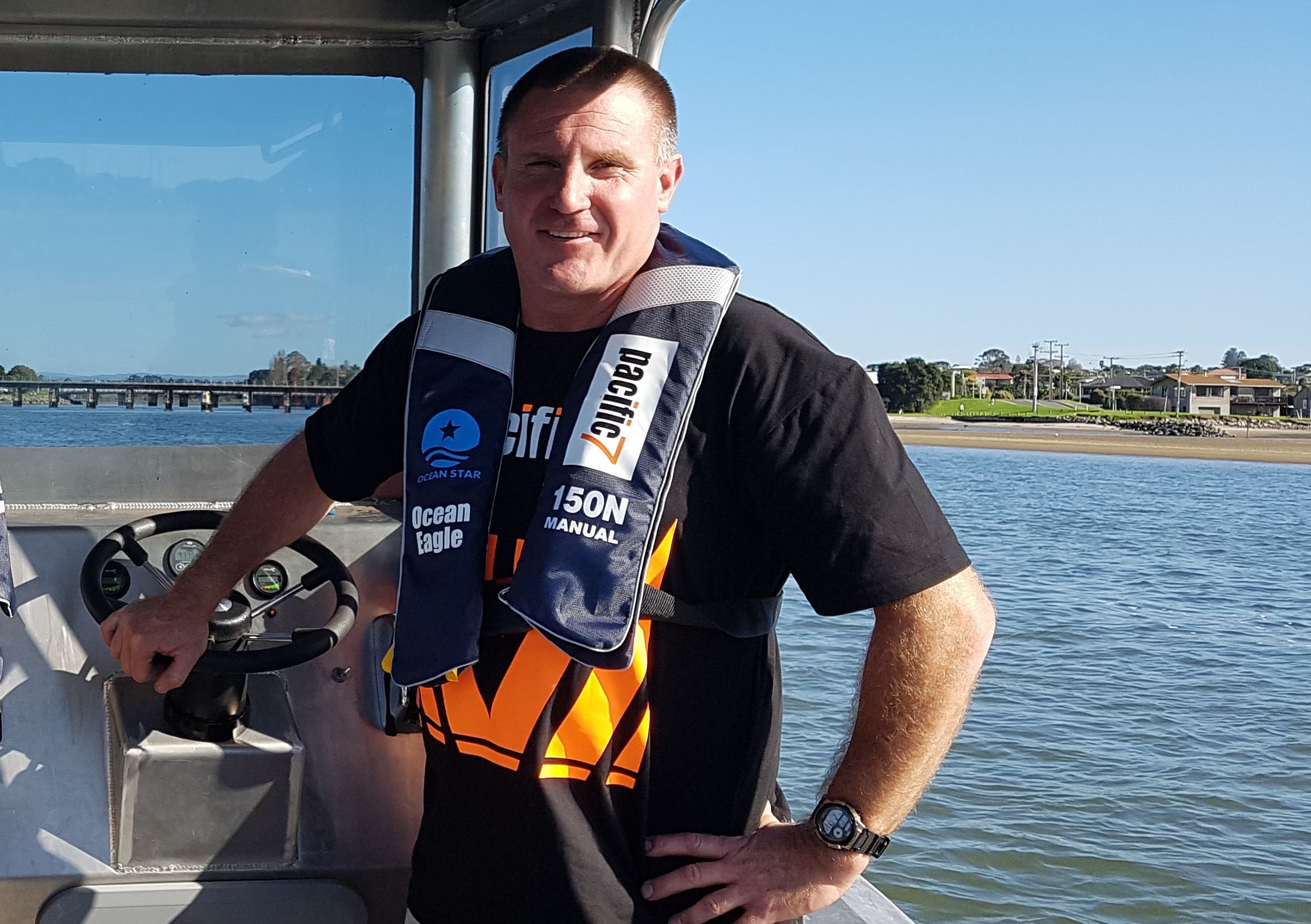
Pacific7 managing director Sean Kelly said the council needed to “grow some teeth” and stop the precinct’s sale. Photo / NZME
Owner of marine service company Pacific7 Sean Kelly said the council needed to “grow some teeth and stop the sale”.
He said he planned to file an injunction with the High Court to try stop it.
“We’re only asking for what we were promised. We’re asking for what the marine precinct was designed to be and we’re asking for [the council] to finally deliver it.”
Moana New Zealand general manager Mark Ngata said they had operated from Tauranga for more than 30 years.
As the country’s largest Māori-owned seafood business, he said its partners and fishermen had invested in the region.
“We find it unconscionable that we can put all this investment into this particular area over 30 years and then with a pen we’re gone.”
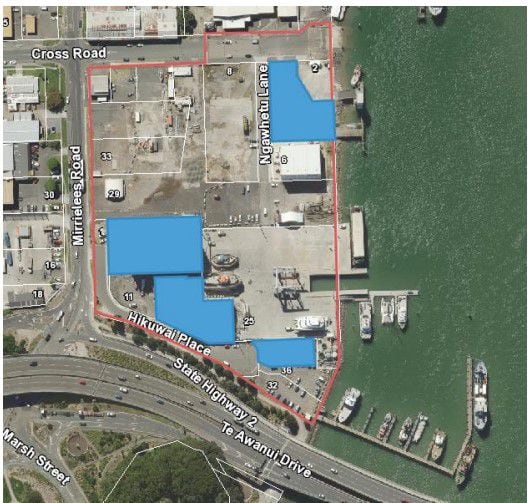
The precinct is outlined in red; the blue shaded areas were privately owned before the sale. Image / Tauranga City Council.
Tauranga was the second largest port where the company offloaded fish and it invested around $8m per year into the region, Ngata said.
It had returns of $21m from the region which were returned to its 58 iwi shareholders through dividends, he said.
Fisherman’s Wharf, where the council suggested businesses could offload, was not suitable because their boats would not fit under the harbour bridge, he said.
“You’ve displaced us as a sector.”
The public gallery was crammed with around 30 people who applauded the speakers.
Mayor Mahé Drysdale said the sale was now an unconditional agreement and inherited from the commission.
It was up to the new council to find a solution and “make the best of the situations that we’ve been dealt”, he said.
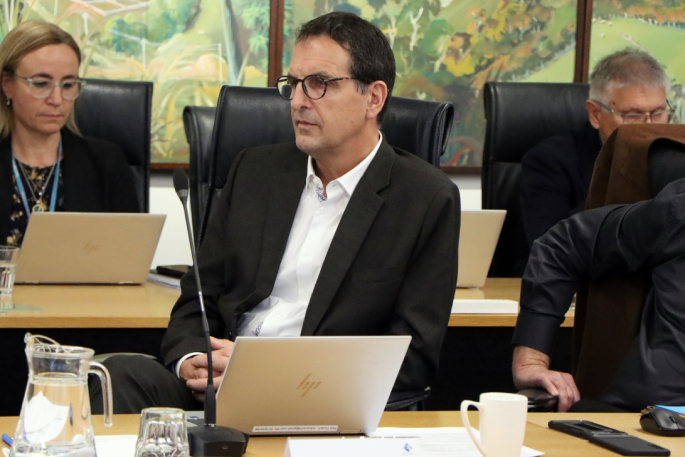 Tauranga City Councillor Rick Curach said the marine precinct was intended for working boats not a "vanity project". Photo / Alisha Evans
Tauranga City Councillor Rick Curach said the marine precinct was intended for working boats not a "vanity project". Photo / Alisha Evans
Councillor Rick Curach said he wanted an outcome that would not compromise the fishing and workboat operations.
When the land was purchased by the council, it was clear it was meant for fishing and workboats, he said.
“But then this vanity issue came along and totally displaced that; it’s just unconscionable.”
Councillor Glen Crowther said the needs of the fishing community were “pretty simple” – they needed a place to tie up boats, a wharf to unload, and access to ice and parking.
The least the council could do was apologise and find a solution, Crowther said.
Marine precinct activity also had $26.3m of debt allocated to it, but the sale proceeds were initially not going to be used to pay down the debt.
Instead, the $13m was earmarked to help fund the $306m civic precinct Te Manawataki o Te Papa.
Drysdale wanted the $13m to be put towards the debt, which the councillors voted for.
The council would also investigate infrastructure options for the fishing and workboat industry.
How the sale price was decided
Tauranga City Council had to have two valuations done. One valued the precinct at $18.63m and the other at $19.24m.
This did not include the 7195m2 hardstand area, which was valued at $6.12m and $7.81m respectively.
The purchaser, Rofe, agreed to align his offer at a mid-point between the two valuations.
Rofe was also not willing to pay the “harbour front premium” of $3.3m because he believed it was appropriate for residential but not an industrial precinct.
The hardstand area also provided a limitation because it must remain a hardstand which devalued the land.
These valuations and some of the equipment meant the council arrived at the $13.987m sale price.
LDR is local body journalism co-funded by RNZ and NZ On Air.


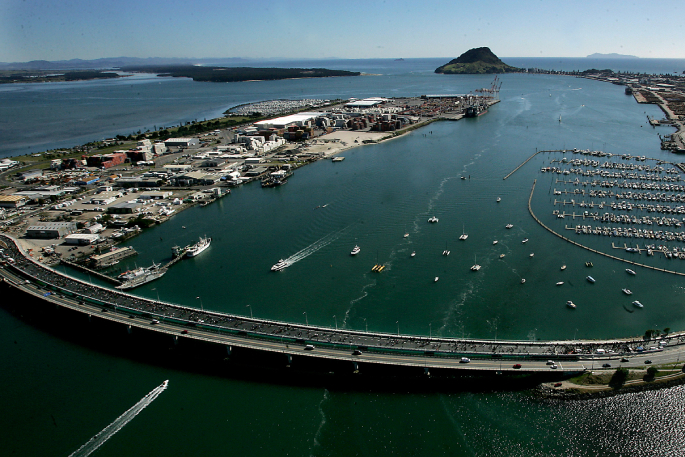

12 comments
Why do I pay my rates
Posted on 26-10-2024 07:11 | By Saul
Tell me again why we pay rates?
Anyone else had enough of living here lol
Hmmm
Posted on 26-10-2024 10:38 | By Let's get real
A perfect example of why we need to elect councillors for their qualifications, experience and knowledge, rather than if they are "nice" people. They need to understand how to run a business and make a profit rather than a loss.
This beggars….
Posted on 26-10-2024 12:35 | By Shadow1
…belief. It’s even worse because it was carried out by the government Commission and progressed past the point where an elected council could stop it. So it seems that this property was purchased by Tauranga’s ratepayers albeit for a purpose that is not Council’s core business. Now it has been sold to private investors at what appears to be a huge loss, and it looks like we’re going to have to pay for a new wharf so our local fishermen can unload their catch.
I’m starting to really dislike the words “to improve the local economy”. What does that actually mean? It sure doesn’t mean that the rates will be lower.
Shadow1.
Another hugely bad decision
Posted on 26-10-2024 15:21 | By formulafuzz
The majority of clear thinking ratepayers are infuriated by many of the Commissioners incredibly poor decisions - selling the Marine Precinct is one of them. It should NEVER have been sold let alone at a price below valuation. Our current councilors must reverse this and other decisions somehow if they wish to retain any credibility. TCC staff cannot be trusted to help as they were complicit with the Commissioners in these decisions. Simply cancelling the contract and paying compensation is even better than letting the developer continue. However, there are other options.
@ formulafuzz
Posted on 26-10-2024 17:24 | By nerak
100% in agreement with your comments, particularly regarding TCC staff, who, after all, have caused the ratepayers so much pain. You may well be right 'cancelling the contract' but you 'other options' are worth airing. My fervent hope is that this can somehow reversed, certainly never should have been allowed to happen. Four commissioners and several TCC staff need to hang their heads in shame, better still stump up with $$ to fix this, one way or the other.
The Master
Posted on 26-10-2024 18:30 | By Ian Stevenson
As recall (maybe wrong?) TCC brillantly dumped $15 million into this a few years ago as part of yet another wonderful well planned scheme to develop it into the "Marine Precinct". Whatever that is/was/isn't?
So besides the land mega-millions have been sunk into this massive TCC created hole... On top of that it is stated above that $26.3m in debt relates to it also?
What do all these crazy numbers mean?
Site value $18-19m + ex TCC ratepayers $15m + debt $26.3m = $50m or so? That then is being sold for $13m?
Then the FAB-4 are diverting the sale proceed to the CBD (nothing marine about that?) Sound really dodgy and some.
Selling out Tauranga
Posted on 28-10-2024 12:30 | By michelem
The Commissioners and now the council continue to sell out local businesses, local interests and ratepayers. What a poor return on this asset.
I think it's time
Posted on 28-10-2024 19:13 | By earlybird
for the CEO to front up and explain in detail how this all happened under his watch. After all the buck stops with him. No doubt he''ll probably hide behing the "commercial sensitivity" excuse to say nothing. But here's the thing mr ceo, we pay your salary, so you owe us a plausible explanation asap.
M.Mouse
Posted on 29-10-2024 05:14 | By M. Mouse
Maybe the land should have been listed with EVES they would have tripled the price as they do LOL.
Take Commisioners to court
Posted on 29-10-2024 09:18 | By an_alias
Based on our Local Council threats to Councillors they are liable for Fluoride penalties I think its time to take the Commissioners to Court and get the difference back.
Local Council set the president that the people who signed it are liable, actually isnt that the Local Council as well ?
@ earlybird
Posted on 29-10-2024 12:11 | By nerak
Thank you, quite right. I don't believe Marty Grenfell is doing right by his employers, and hasn't for some time. We seem to have had a bad run with CEO's.
In a normal world
Posted on 23-11-2024 15:36 | By Naysay
Normally in real business the CEO would step down. Yet another reckless decision and we are ratepayers are over reckless decisions.
Leave a Comment
You must be logged in to make a comment.